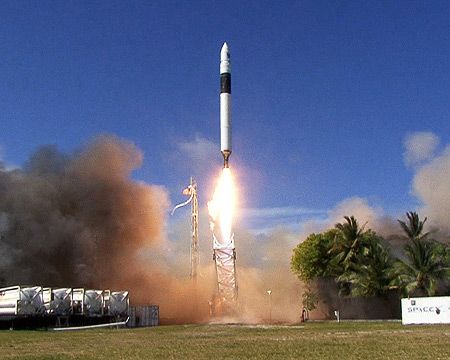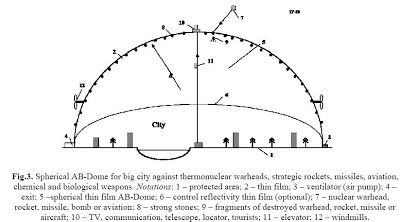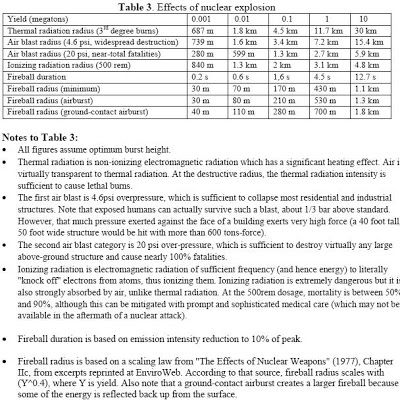The projected size of Barack Obama’s “stimulus package” is heading north, from hundreds of billions of dollars into the trillions. And the Obama program comes, of course, on top of the various Bush administration bailouts and commitments, estimated to run as high as $8.5 trillion.
Will this money be put to good use? That’s an important question for the new President, and an even more important question for America. The metric for all government spending ultimately comes down to a single query: What did you get for it?
If such spending was worth it, that’s great. If the country gets victory in war, or victory over economic catastrophe, well, obviously, it was worthwhile. The national interest should never be sacrificed on the altar of a balanced budget.
So let’s hope we get the most value possible for all that money–and all that red ink. Let’s hope we get a more prosperous nation and a cleaner earth. Let’s also hope we get a more secure population and a clear, strategic margin of safety for the United States. Yet how do we do all that?
There’s only one best way: Put space exploration at the center of the new stimulus package. That is, make space the spearhead rationale for the myriad technologies that will provide us with jobs, wealth, and vital knowhow in the future. By boldly going where no (hu)man has gone before, we will change life here on earth for the better.
To put it mildly, space was not high on the national agenda during 2008. But space and rocketry, broadly defined, are as important as ever. As Cold War arms-control theology fades, the practical value of missile defense–against superpowers, also against rogue states, such as Iran, and high-tech terrorist groups, such as Hezbollah and Hamas–becomes increasingly obvious. Clearly Obama agrees; it’s the new President, after all, who will be keeping pro-missile defense Robert Gates on the job at the Pentagon.
The bipartisan reality is that if missile offense is on the rise, then missile defense is surely a good idea. That’s why increasing funding for missile defense engages the attention of leading military powers around the world. And more signs appear, too, that the new administration is in that same strategic defense groove. A January 2 story from Bloomberg News, headlined “Obama Moves to Counter China With Pentagon-NASA Link,” points the way. As reported by Demian McLean, the incoming Obama administration is looking to better coordinate DOD and NASA; that only makes sense: After all, the Pentagon’s space expenditures, $22 billion in fiscal year 2008, are almost a third more than NASA’s. So it’s logical, as well as economical, to streamline the national space effort.
That’s good news, but Obama has the opportunity to do more. Much more.
Throughout history, exploration has been a powerful strategic tool. Both Spain and Portugal turned themselves into superpowers in the 15th and 16th century through overseas expansion. By contrast, China, which at the time had a technological edge over the Iberian states, chose not to explore and was put on the defensive. Ultimately, as we all know, China’s retrograde policies pushed the Middle Kingdom into a half-millennium-long tailspin.
Further, we might consider the enormous advantages that England reaped by colonizing a large portion of the world. Not only did Britain’s empire generate wealth for the homeland, albeit often cruelly, but it also inspired technological development at home. And in the world wars of the 20th century, Britain’s colonies, past and present, gave the mother country the “strategic depth” it needed for victory.
For their part, the Chinese seem to have absorbed these geostrategic lessons. They are determined now to be big players in space, as a matter of national grand strategy, independent of economic cycles. In 2003, the People’s Republic of China powered its first man into space, becoming only the third country to do so. And then, more ominously, in 2007, China shot down one of their own weather satellites, just to prove that they had robust satellite-killing capacity.
Thus the US and all the other space powers are on notice: In any possible war, the Chinese have the capacity to “blind” our satellites. And now they plan to put a man on the moon in the next decade. “The moon landing is an extremely challenging and sophisticated task,” declared Wang Zhaoyao, a spokesman for China’s space program, in September, “and it is also a strategically important technological field.”
India, the other emerging Asian superpower, is paying close attention to its rival across the Himalayas. Back in June, The Washington Times ran this thought-provoking headline: “China, India hasten arms race in space/U.S. dominance challenged.” According to the Times report, India, possessor of an extensive civilian satellite program, means to keep up with emerging space threats from China, by any means necessary. Army Chief of Staff Gen. Deepak Kapoor said that his country must “optimize space applications for military purposes,” adding, “the Chinese space program is expanding at an exponentially rapid pace in both offensive and defensive content.” In other words, India, like every other country, must compete–because the dangerous competition is there, like it or not.
India and China have fought wars in the past; they obviously see “milspace” as another potential theater of operations. And of course, Japan, Russia, Brazil, and the European Union all have their own space programs.
Space exploration, despite all the bonhomie about scientific and economic benefit for the common good, has always been driven by strategic competition. Beyond mere macho “bragging rights” about being first, countries have understood that controlling the high ground, or the high frontier, is a vital military imperative. So we, as a nation, might further consider the value of space surveillance and missile defense. It’s hard to imagine any permanent peace deal in the Middle East, for example, that does not include, as an additional safeguard, a significant commitment to missile and rocket defense, overseen by impervious space satellites. So if the U.S. and Israel, for example, aren’t there yet, well, they need to get there.
Americans, who have often hoped that space would be a demilitarized preserve for peaceful cooperation, need to understand that space, populated by humans and their machines, will be no different from earth, populated by humans and their machines. That is, every virtue, and every evil, that is evident down here will also be evident up there. If there have been, and will continue to be, arms races on earth, then there will be arms races in space. As we have seen, other countries are moving into space in a big way–and they will continue to do so, whether or not the U.S. participates.
Meanwhile, in the nearer term, if the Bush administration’s “forward strategy of freedom”–the neoconservative idea that we would make America safe by transforming the rest of the world–is no longer an operative policy, then we will, inevitably, fall back on “defense” as the key idea for making America safe.
But in the short run, of course, the dominant issue is the economy. Aside from the sometimes inconvenient reality that national defense must always come first, the historical record shows that high-tech space work is good for the economy; the list of spinoffs from NASA, spanning the last half-century, is long and lucrative.
Moreover, a great way to guarantee that the bailout/stimulus money is well spent is to link it to a specific goal–a goal which will in turn impose discipline on the spenders. During the New Deal, for example, there were many accusations of malfeasance against FDR’s “alphabet soup” of agencies, and yet the tangible reality, in the 30s, was that things were actually getting done. Jobs were created, and, just as more important, enduring projects were being built; from post offices to Hoover Dam to the Tennessee Valley Authority, America was transformed.
Even into the 50s and 60s, the federal government was spending money on ambitious and successful projects. The space program was one, but so was the interstate highway program, as well as that new government startup, ARPANET.
Indeed, it could be argued that one reason the federal government has grown less competent and more flabby over the last 30 years is the relative lack of “hard” Hamiltonian programs–that is, nuts and bolts, cement and circuitry–to provide a sense of bottom-line rigor to the spending process.
And so, for example, if America were to succeed in building a space elevator–in its essence a 22,000-mile cable, operating like a pulley, dangling down from a stationary satellite, a concept first put forth in the late 19th century–that would be a major driver for economic growth. Japan has plans for just such a space elevator; aren’t we getting a little tired of losing high-tech economic competitions to the Japanese?
So a robust space program would not only help protect America; it would also strengthen our technological economy.
But there’s more. In the long run, space spending would be good for the environment. Here’s why:
History, as well as common sense, tells us that the overall environmental footprint of the human race rises alongside wealth. That’s why, for example, the average American produces five times as much carbon dioxide per year as the average person dwelling anywhere else on earth. Even homeless Americans, according to an MIT study–and even the most scrupulously green Americans–produce twice as much CO2, per person, as the rest of the world. Around the planet, per capita carbon dioxide emissions closely track per capita income.
A holistic understanding of homo sapiens in his environment will acknowledge the stubbornly acquisitive and accretive reality of human nature. And so a truly enlightened environmental policy will acknowledge another blunt reality: that if the carrying capacity of the earth is finite, then it makes sense, ultimately, to move some of the population of the earth elsewhere–into the infinity of space.
The ZPG and NPG advocates have their own ideas, of course, but they don’t seem to be popular in America, let alone the world. But in the no-limits infinity of space, there is plenty of room for diversity and political experimentation in the final frontier, just as there were multiple opportunities in centuries past in the New World. The main variable is developing space-traveling capacity to get up there–to the moon, Mars, and beyond–to see what’s possible.
Instead, the ultimately workable environmental plan–the ultimate vision for preserving the flora, the fauna, and the ice caps–is to move people, and their pollution, off this earth.
Indeed, space travel is surely the ultimate plan for the survival of our species, too. Eventually, through runaway WMD, or runaway pollution, or a stray asteroid, or some Murphy-esque piece of bad luck, we will learn that our dominion over this planet is fleeting. That’s when we will discover the grim true meaning of Fermi’s Paradox.
In various ways, humankind has always anticipated apocalypse. And so from Noah’s Ark to “Silent Running” to “Wall*E,” we have envisioned ways for us and all other creatures, great and small, to survive. The space program, stutteringly nascent as it might be, can be seen as a slow-groping understanding that lifeboat-style compartmentalization, on earth and in the heavens, is the key to species survival. It’s a Darwinian fitness test that we ought not to flunk.
Barack Obama, who has blazed so many trails in his life, can blaze still more, including a track to space, over the far horizon of the future. In so doing, he would be keeping faith with a figure that he in many ways resembles, John F. Kennedy. It was the 35th President who declared that not only would America go to the moon, but that we would lead the world into space.
As JFK put it so ringingly back in 1962:
The vows of this Nation can only be fulfilled if we in this Nation are first, and, therefore, we intend to be first. In short, our leadership in science and in industry, our hopes for peace and security, our obligations to ourselves as well as others, all require us to make this effort, to solve these mysteries, to solve them for the good of all men, and to become the world’s leading space-faring nation.
Today the 44th President must spend a lot of money to restore our prosperity, but he must spend it wisely. He must also keep America secure against encroaching threats, even as he must improve the environment in the face of a burgeoning global economy.
Accomplishing all these tasks is possible, but not easy. Yes, of course he will need new ideas, but he will also need familiar and proven ideas. One of the best is fostering and deploying profound new technology in pursuit of expansion and exploration.
The stars, one might hope, are aligning for just such a rendezvous with destiny.



